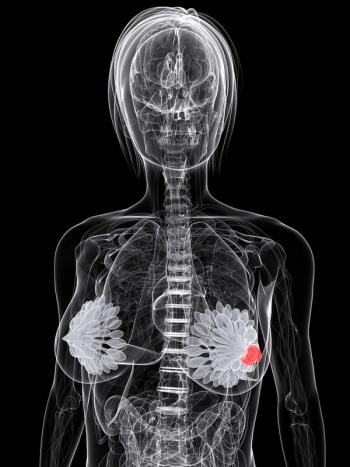
KIM-1 May Predict Higher-Risk Disease in Kidney Cancer
KIM-1 is a biomarker in the blood that may help noninvasively detect kidney cancer, according to Wenxin (Vincent) Xu, MD.
Higher levels of kidney injury molecule 1 (KIM-1) expression may predict more aggressive disease in patients with early-stage kidney cancer or a higher likelihood of recurrence among patients with resected renal tumors, according to Wenxin (Vincent) Xu, MD.
Xu, a medical oncologist at Dana-Farber Cancer Institute and an assistant professor of medicine at Harvard Medical School, gave CancerNetwork® an overview of a presentation he gave on KIM-1 as a prognostic tool for kidney cancers at the
He began by describing KIM-1 as a protein typically overexpressed in kidney cancer cells that can be detected in the bloodstream. Xu suggested that the biomarker could be used as a noninvasive means of detecting kidney cancer and that its utility could be applied to diagnosis, risk stratification, and monitoring disease treatment.
He further expressed that it could be used as a predictive measure in a variety of settings, such as higher levels of KIM-1 predicting higher-risk tumors in early-stage disease or a higher likelihood of recurrence in patients with resected renal tumors. Xu concluded by stating that patients who experience diminished KIM-1 levels within the first 3 weeks of immunotherapy exhibit better long-term outcomes.
Transcript:
KIM-1, which is also called kidney injury molecule 1, also called TIM-1, is a protein that’s overexpressed in kidney cancer cells. The protein is at high levels on the surface of kidney cancer. There’s a section of the protein, the extracellular domain, which is cleaved off into the blood and is detectable. It’s a blood biomarker that you can detect in the blood. The benefit of KIM-1 [is] it’s a noninvasive way to detect kidney cancer. What we found through several studies across disease stages in kidney cancer is that you can use KIM-1 to diagnose, risk-stratify, detect, and monitor disease treatment.
Specifically, in patients who [have] early-stage [disease] with a renal mass, [high levels of] KIM-1 in the blood can predict a more aggressive [and higher-risk] tumor. In patients who have undergone surgery and have their tumors removed, if the KIM-1 levels remain high, those patients are more likely to recur and benefit more from adjuvant immunotherapy. In [patients in the] metastatic [setting], higher levels of KIM-1 predict more aggressive disease and worse overall prognosis. Patients who have an improvement in KIM-1 after 3 weeks of immunotherapy, so 1 dose of treatment…do well long term.
Reference
Xu W. From bench to bedside: advancing KIM-1 as a tool for clinical decision-making. Presented at: 2025 Kidney Cancer Research Summit; July 17-18, 2025; Boston, MA.
Newsletter
Stay up to date on recent advances in the multidisciplinary approach to cancer.

















































































